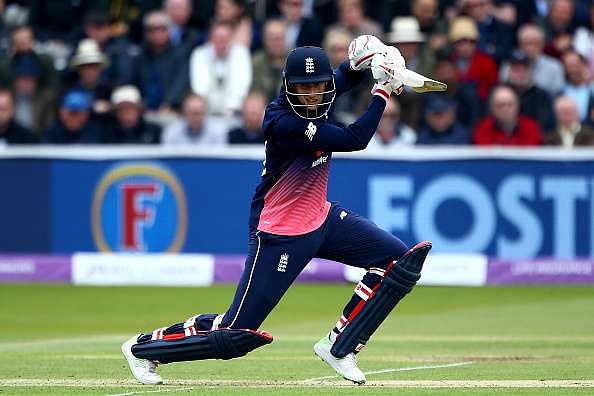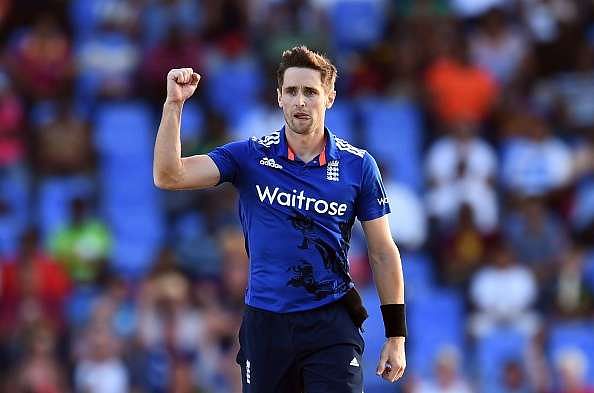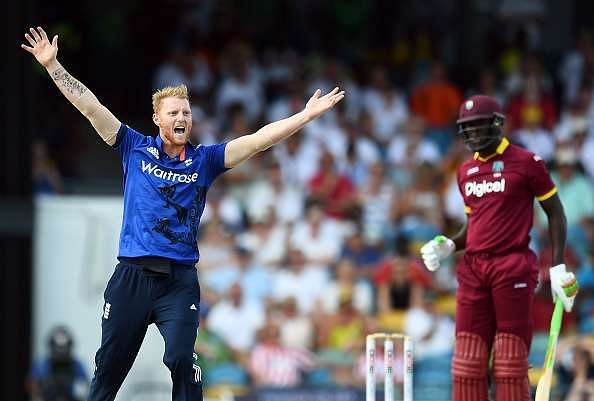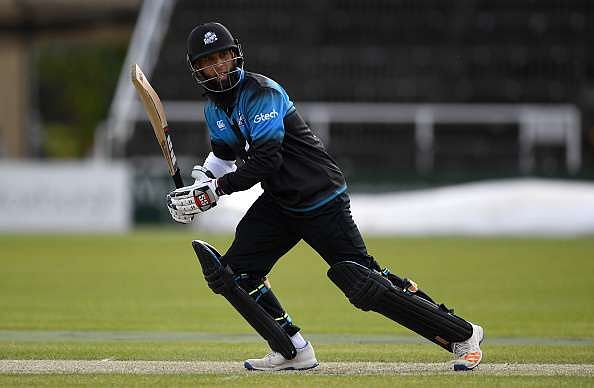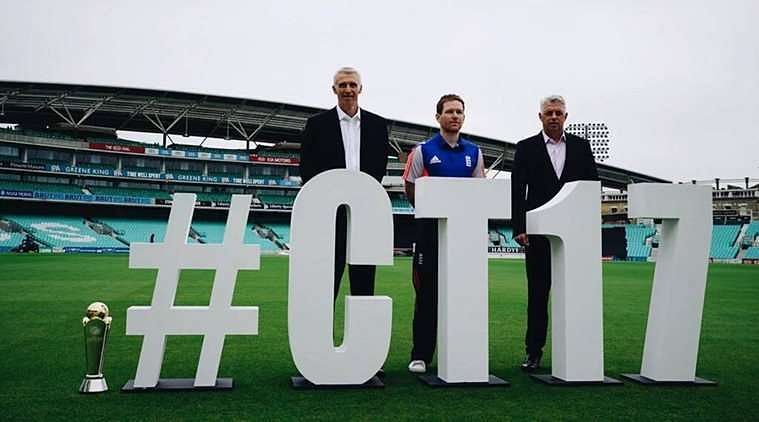
Why England are front runners for the Champions Trophy
For the second time running, the ICC Champions Trophy has found a host in the British Isles. During the previous two editions which they hosted, England were safely thought not to be carrying the tag of favourites. Yet, they made it to the final each time in 2004 and 2013 and finished runners-up courtesy of two spirited opponents in West Indies and India.
Four years later, however, the script is different. There are reasons why the Barmy Army can believe their cricketing heroes hold the edge in the most valuable trophy that 2017 brings (though English fans already have one eye stuck on a potential Ashes triumph Down Under during the winter).
Like the World Cup – which they have hosted the maximum times already - the fifth one is due in two years’ time and England is ahead in staging the Champions Trophy too. And like the World Cup, England has never had the opportunity to lay their hands on the silverware.
This time, though, there are factors that may overturn their fortunes and add to the World T20 among the ICC trophies in their cabinet.
Tremendous transformation in ODI cricket
It seems ages since England crashed to a second successive defeat against Bangladesh in the 2015 World Cup. Scenes of James Anderson’s stumps being shattered by Rubel Hossain, which gave Bangladesh their final wicket in the group game of the 2015 World Cup, were still fresh in the minds of supporters when an energetic New Zealand team landed in England to face a broken English one-day outfit.
Exactly three months after newly appointed limited-overs skipper Eoin Morgan’s side crashed to that shock loss, started a revolution of the one-day set up under the supervision of the commanding pair of Team Director Andrew Strauss and new coach Trevor Bayliss.
From being a jostling batting order which failed to adapt to the demands of modern ODI cricket to becoming a menacing bunch of batsmen who have plundered massive totals in fifty-over cricket since, the story of England’s tremendous transformation deserves a place in the history books.
England had failed to qualify for the quarterfinals at the 2015 World Cup, where they had fallen short of every Test playing nation that they encountered in their six matches of the group stage. The batting lacked the might which white ball cricket begged to possess. That, mingled with a misfiring bowling unit meant England were dumped out of the competition with one game remaining.
But the Black Caps – and the rest of the world – found it bewildering how a change in personnel, both the players as well as the management, proved to be the perfect solution for an acceleration towards being a threatening force in limited-overs cricket.
All of Anderson, Stuart Broad, Ian Bell, Gary Ballance and Ravi Bopara were shown the door for underperforming during cricket’s numero uno event in 2015. In came the young brigade of Ben Stokes, Jason Roy, David Willey, Reece Topley and Adil Rashid as replacements, and their fearless approach towards big hitting and efficacy with the ball turned the tables on their opponents.
In the aftermath of the World Cup disaster, England raked up scores of 300 or more – they breached 350 thrice – in four of the five ODIs against New Zealand in a series which recorded the highest run aggregate ever in a five-match bilateral contest. Aside from that, the hosts touched the 400-run mark anew in the first ODI at Edgbaston and gunned down 350 with six overs to spare at Trent Bridge.
There was enough evidence now that a previously shaken up England team had successfully reversed their ODI trends, and dangerously so.
Right blend of experience and youth
Among England’s fifteen-member squad set to represent them at the Champions Trophy, only one has played over a hundred ODIs – the captain Eoin Morgan. With 178 ODIs against his name, Morgan is by far the most experienced of all his colleagues.
However, the pair that follows him comprises the ever-consistent Joe Root with 85 and the bullying wicketkeeper-batsman Jos Buttler with 87. Both bring with them plenty of experience and match-defining knocks in the past.
The influence that this trio can provide to the rest of the batting line-up is sufficient for the others to learn from. The young opening pair of Jason Roy and Alex Hales has already shown their exploits over the last two years since they first joined hands in the New Zealand series, and they will leave no stone unturned in their first fifty-over major tournament, particularly considering that it will be played on their own soil.
No different will be the idea of one of the most adroit all-rounders of modern day cricket – Ben Stokes. With astounding batting and fabulous bowling skills, Stokes’ dreadful presence acts like a caveat itself. To assist him in his shot-making, he is accompanied by a rapidly rising Jonny Bairstow, the quick learner in Sam Billings and the spin-bowling all-rounder Moeen Ali.
And to aid him with the cherry in hand, he has the services of spot-on bowlers David Willey, Chris Woakes, Jake Ball and Mark Wood.
The fact that five out of the fifteen members have played less than 30 ODIs – Ball and Billings combine for a total of 19 – was never a worry for the England selectors and management. They were confident enough to exclude someone of the calibre of Steven Finn, who has 68 ODIs under his belt.
Finn’s figure of 6 feet 7 inches provides him with the ability to extract good bounce from the fresh, early summer surfaces at home, and is one of the latest England fast bowlers to click a pace of 140-plus persistently.
The reverse swing that Finn can generate with the old ball has also come in handy for England in the past, most notably in a tri-series match against India at Brisbane in 2015, where he ripped apart the Indian batting with memorable swing and reverse swing bowling and ended up with 5/33.
To make up for him though is the left-handed new ball bowler Willey, who has struck for his country in the powerplay on majority of occasions. For company, Willey has an eight-ODI old Ball, who shone with a vital 5/51 on ODI debut in Bangladesh last October when the hosts seemed ready for another upset while chasing 310.
Together, a young yet fairly experienced England team stand a great chance to deliver the goods on the days which matter.
All round options, both in pace and spin
A major boost for the English team remains the presence of a plethora of all-rounders, and the list includes bowlers of both pace as well as spin. The most useful of them all is the big man Ben Stokes. Not only can Stokes bat at five or six but can also be promoted to three or four if the need arises.
Stokes has the potential of smashing from ball one, something he will be required to do if he arrives at the death, while also possessing the requirements of moulding together the innings if England lose early wickets.
Add to that his attitude with the ball, which makes him click with the new ball besides bowling cutters and slower balls.
Next among the pace-bowling all-rounders sits the emerging Chris Woakes. Since the previous summer, Woakes has developed himself into a very dependable member across formats. His rise began when he ended the Tests against Sri Lanka with a bowling average of 18.75, having also got a half century.
In the ODIs that followed, his bat spoke again when a crucial 95* at Trent Bridge helped England escape with a tie. Woakes had by then learnt to utilise the new ball and swing it both ways, as is testified with the 11 wickets he got in the Lord’s Test against Pakistan a few weeks later
Gradually, he became a regular figure in England’s starting eleven in both formats, and his hefty blows lower down the order make for a fan’s delight.
Now come the spin-bowling all-rounders. The first among them is the off-spin bowler Moeen Ali, who bats at seven. Another of those with an ability to go hammer and tongs early in his innings, Moeen has mostly played as a finisher in limited-overs cricket and also chipped in with off-spinners.
He also provides England with an option of using him as an opener if the regular ones are unavailable, as he has a background of two centuries as an opener.
His spin partner is the surging Adil Rashid, who primarily turns the ball the other way with his wrist spin. Rashid has been a notable figure in England’s limited-overs campaigns since the 2015 summer. His flighted leg spinners have castled batsmen in the past, while his googly too has foxed them.
Rashid is high on confidence after his maiden five-for against Ireland earlier this month when he hurt them with figures of 5/27 in Bristol. In the next game, his match-defining sixth wicket stand of 88 in under eight overs with Jonny Bairstow, in which Rashid smacked 39 from 25 balls, made England sail past 300 and take the series 2-0.
The list does not end there. There is Joe Root, who has the knack of interrupting a steady partnership with his part-time off-spin – he famously got two wickets in the World T20 final in 2016 in just the second over of the West Indies run chase – and himself bagged 2/9 in the Bristol ODI against Ireland.
There is also the duo of David Willey, who opens the batting for Yorkshire in T20 cricket, and Liam Plunkett, who can hit the long ball well; and the other department where England have choices available is the existence of two more wicketkeepers in the squad save for the first-choice Jos Buttler – both Bairstow and Sam Billings can don the gloves as well as bat with elan.
England start their Champions Trophy preparations with a short bilateral ODI series against the mighty South Africans. They face Bangladesh in the opening fixture of the 2017 edition, which might awaken the ghosts of the 2015 World Cup.
The match is a sellout already, and the crowd will not only pray that England get the better of Bangladesh, but also that they make the final, like in 2004 and 2013, as well as win it, unlike then.


